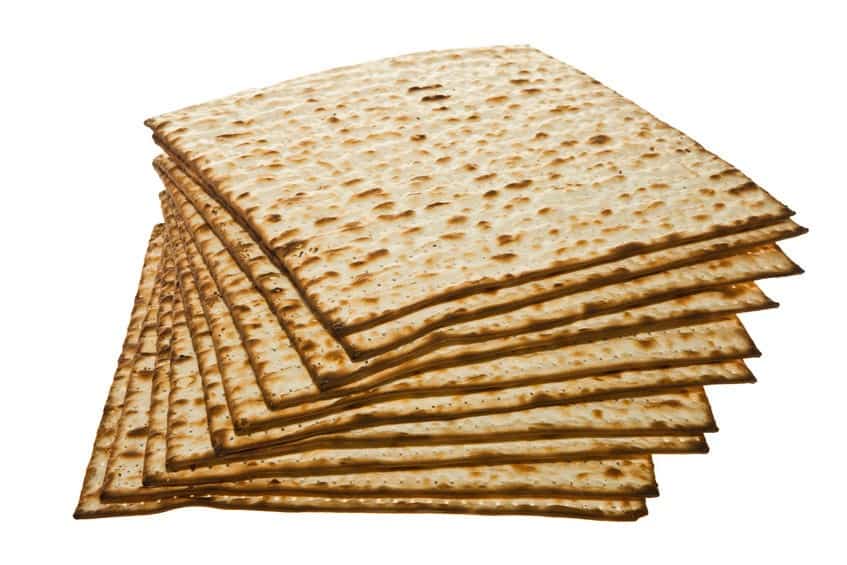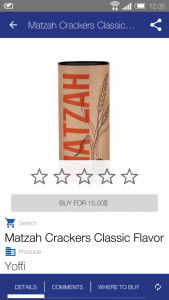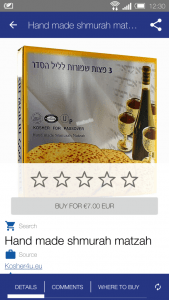
From the standpoint of the recipe, matzah (unleavened bread) which we are commanded to eat on the first day of the Passover is one of the easiest products: water, flour – that is it; any additives or additions make it unsuitable for keeping the commandments, or even non-kosher. However, Jews would not be Jews unless they found even here a place for different opinions and approaches.
First of all, there are the two types of matzah: regular and “protected” (matzo-shmurah). The difference among those is in the following: regular matzah is baked out of the flour which since the milling has been protected from contact with any liquid that might cause fermentation; protected – out of the wheat which has been protected from contact with liquid since the time it was harvested. Some Jews eat only this kind of matzah, for others simple matzah is good enough for workdays of the festival (Chol HaMoed); however, during the festival itself they require only the protected one.
The other conflict owes its origin to the scientific-and-technological advance. All through the ages Jews have been making matzah by hand. But in the XIX century in Europe special machines for baking the matzah appear, which has detonated controversies at once.
In 1857, the request about the kosher status of machine-made matzah was sent to rabbi Shlomo Kluger of Brody (1785-1869). He has never seen the new machine, however, having read the detailed description, pronounced the machine-made matzah to be non-Kosher – because a machine consists a lot of parts, among which small pieces of dough might get stuck, and there is no possibility to wash it thoroughly and regularly enough, there is a threat that those small pieces might ferment and get into new dough. Besides, hand making of matzah, according to rabbi Kluger, gives stable income to the poorest which they would lose in case of the implementation of the new machines.
However, the supporters of technological progress have found their rabbis too. Almost at the same time with Kluger the question about the machine-made matzah was put to not less well-known halachist rabbi Joseph Nathansohn of Lemberg (Lviv) (1810–1875). And he not only recognized machine- made matzah being absolutely kosher, but even supposed that from the halachic point of view it might be even more preferable, since automatization allows to keep more exactly to the prescribed baking technology.
Additional disagreements appeared because of the matzah form. Handmade matzah traditionally used to be round, and the machine-made product started to be made square as the matter of convenience. That is why the “conservatives” took at the flood and blamed their opponents for neglecting the traditions. In return, the supporters of machine baking referred to opinion of the head of the religious court of the city of Lemberg who supposed that matzah should be square, since the showbread in the Sanctuary looked exactly like that.
The arguments about the kosher status of machine-made matzah continued in the XX century. Through time, the dust has settled a little bit. Today, the majority of Jews eat machine-made matzah, be it simple or protected. At the same time, many people believe that for the Seder at least at the Passover Seder Plate (ke’ara) there should be the hand-made matzah. In this connection, a funny situation arises: as any handmade product, handmade matzah is several orders more expensive than the machine- made one; in Israel, for example, the three handmade sheets cost more than several kilos of machine-made one. That is why when the head of the family rising those “golden” unleavened bread says “Here is our poverty bread”, many people cannot stop smiling.
Looking for special Matzah for upcoming holiday, check out in our app.



